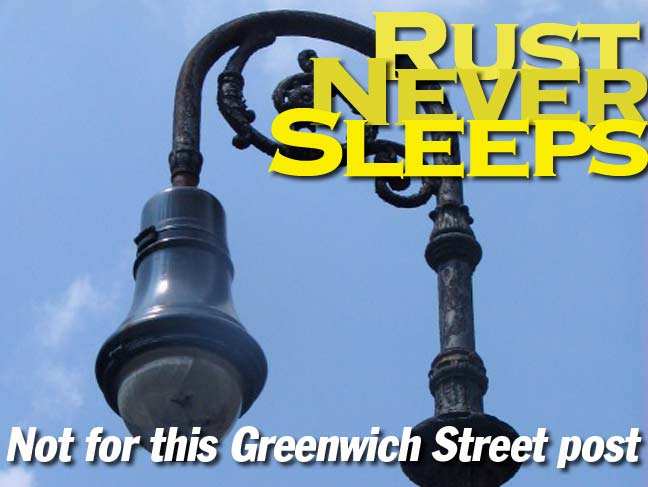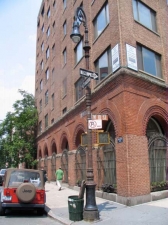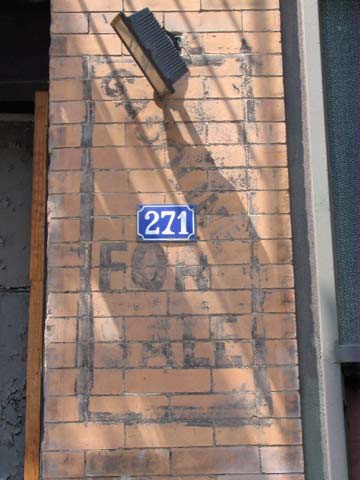News came this week [2009] that a 600 year old tree in Douglaston was rotting — it wasn’t dead yet, but it was getting there finally, and before more branches cracked off, it was decided to chop it down. (I must have passed that tree a number of times since moving to neighboring Little Neck, and damned if the thing didn’t look a day over 200.) In addition, a venerable Harlem building is going to be severely excised. (Use ’em or lose ’em.)
It’s seemingly getting harder to identify NYC’s vintage Bishop Crook posts and other poles from the Golden Age of Cast Iron Street lighting from the new-jack retro upstarts the City has been installing in droves over the past 10-15 years. The Golden Age in NYC ran roughly from 1892, when the first posts were installed along 5th Avenue, to 1950, when the first vanguard of octagonal-shafted streamlined poles began appearing in a small knot along Third Avenue under the el, which itself would vanish within five years. On the NW corner of West 10th and Greenwich Streets, though, it’s a simple matter to deduce that this is indeed a decades-long survivor and not a nouveau interloper.
It’s the rust. You could dump this pole in a vat of Rustoleum or WD40 and the ferrous oxide would still be flaking off.
The bishop crook, according to some historians, was designed by Edison Company executive Richard Rogers Bowker (possibly imitative of similar post designs found in British cities) in 1986, smack in the middle of the Beaux Arts era, a time rich with decorative elements most modern architects dismiss as unneeded and wasteful in designs today. Many of the flourishes on cast iron lamps dating from this era are imitative of nature, especially acanthus plants.
Most of the flourishes on bishop crook posts are purely decorative; however the feature top left was used to hold a fire alarm light. In fact a small piece it is still there.
The usual policy of the Department of Transportation concerning rusted posts like this, it seems, is to allow them to deteriorate until they present a danger to motorists or pedestrians and replace them. The recommendation here is to replace this post now, put it in the care of the Museum of the City of New York or similar organ, which can restore it and repaint it and display it with the respect it deserves.
Just across the street on Greenwich we see a remnant of a time when beasts of burden were the primary means of transport. The building on the NW corner of Greenwich and West 10th bears several stable signs and a pulley for hay bales at the roofline.
But note the faded signage on the West 10th side. They hint that they were placed there at a time of transition from ole Dobbin to motorized transport. Based on old photos I’ve seen that would date this sign to the early 1920s, though horses were still seen pulling wagons well into mid-century, and of course the NYPD has always had a mounted division.
According to a Greenwich Village Historic District designation report, the building dates to 1911 and there was a trucking business here until 1921. Interestingly, actor Wesley Snipes owned the building from 1998-2000.
Photographed August 2008; page completed October 7, 2009














